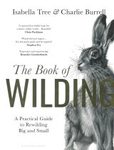![RSPB How to Photograph Garden Birds RSPB How to Photograph Garden Birds]()
Click to have a closer look
About this book
Contents
Customer reviews
Biography
Related titles
About this book
If you have a garden, no matter how big or small, you can attract birds. If you have birds, you have some wonderful and inspiring opportunities for wildlife photography. Even if you have no more than a phone camera and a few different species, don't despair: everything can be photographed in myriad different ways, as well as in all sorts of compelling light and weather conditions.
There are three great advantages to photographing garden birds: first, they are readily accessible – you can even capture frame-filling images of them from your kitchen window; second, they tend to be tamer and more relaxed around people than most 'wild' birds out in the countryside; and, third, they are impressively adaptable: you can prepare outdoor 'studios' or provide special props and they will often pose for your camera within a few minutes.
You just need to know how to do it. And that's where RSPB How to Photograph Garden Birds comes in. Step by step, it will help you to take uncommonly good images of common (and surprisingly beautiful) subjects right on your own doorstep. Packed with beautiful photography, insider tips and tricks, as well as practical advice and specific projects, it will help your photography to improve in leaps and bounds.
Once you have mastered the basics, you can make garden bird photography as simple or as challenging as you like. A robin perched on a garden spade? Easy. A blackbird feeding amongst fallen leaves? No problem. A blue tit in flight? That may take a little more planning, but you'll be capturing professional quality images in no time.
And there's more. Garden bird photography isn't only rewarding in its own right – it's also a sensational way to hone wildlife photography and field skills that you can then adapt to suit any subject anywhere in the world.
Contents
- Introduction
- Where in the world are you shooting?
- Food and feeders
- What not to take
- Working the light and the weather
- Backgrounds (and foregrounds)
- Essential (and non-essential) equipment
- Composition
- The basic set-up: bird on a perch
- Birds with other props
- Birds on the ground
- Birds in flight
- Wide-angle close-ups
- Woodpecker & nutchatch special
- Reflecting pool
- Careful observation and chance encounters
- Spot the mistakes
- Getting creative
Customer Reviews
Biography
Mark Carwardine is a zoologist and an award-winning writer, a TV and radio presenter, a bestselling author of more than 50 books, a BBC Wildlife magazine columnist, a widely published photographer and an outspoken environmentalist. He presented BBC Radio 4’s weekly programme, Nature, for many years and is best known for his Last Chance to See books, radio series and TV series with Douglas Adams and Stephen Fry. He was Chair of the Judging Panel of the prestigious Wildlife Photographer of the Year competition for seven years and was selected as one of ‘The World’s 40 Most Influential Nature Photographers’ in the US’s Outdoor Photography magazine. He is currently presenting and producing the BBC Wildlife Photography Masterclass on YouTube and runs wildlife photography holidays and workshops all over the world.


































